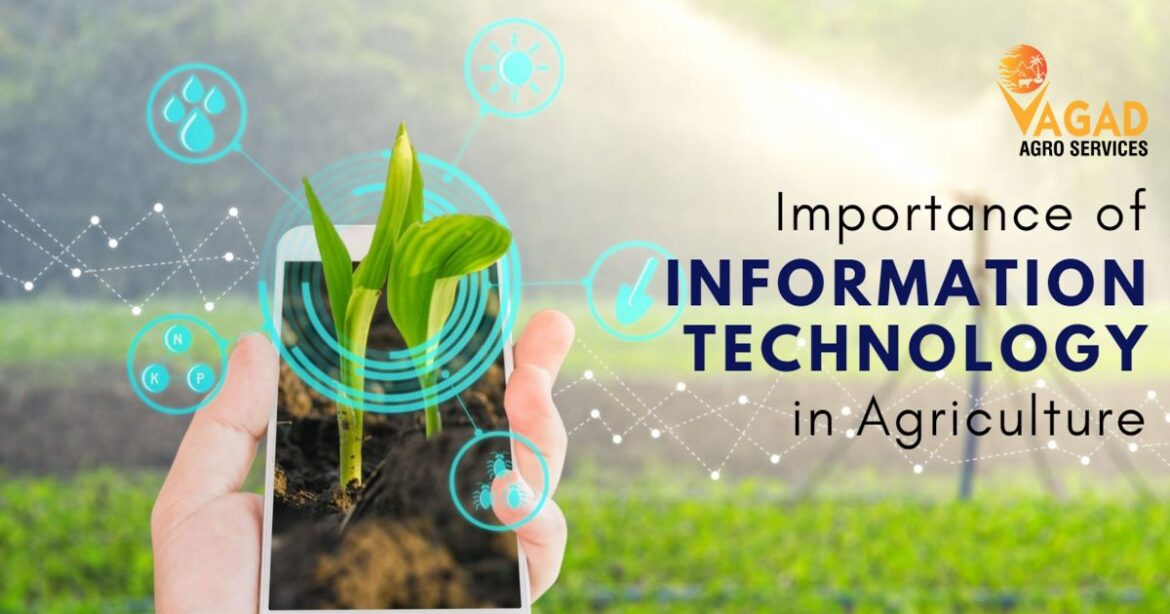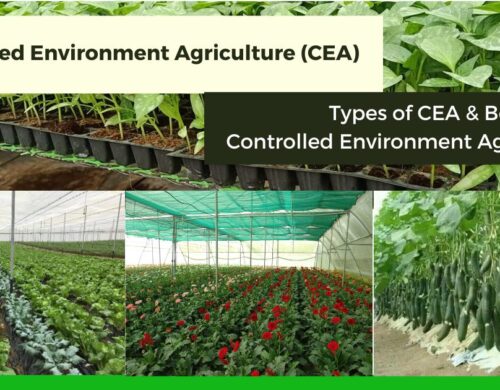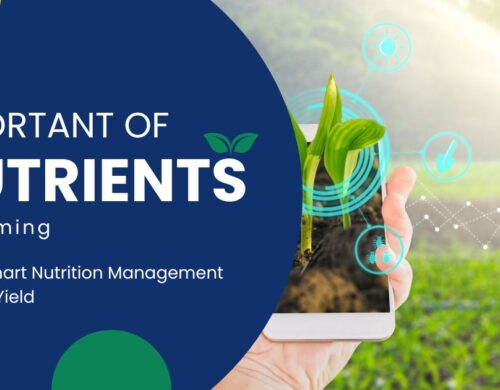
Information technology (IT) plays a crucial role in modern agriculture, revolutionizing the way farmers manage their operations, make decisions, and improve overall efficiency. Information technology (IT) is increasingly being used in agriculture to improve efficiency and productivity, as well as to help farmers make better decisions about their crops and livestock.
One way that IT is being used in agriculture is through precision agriculture. Precision agriculture uses IT to collect and analyze data about crops and livestock, such as soil conditions, weather patterns, and pest infestations. This data can then be used to make more informed decisions about crop and livestock management, such as when to plant, water, and fertilize crops, and when to treat livestock for diseases.
Another way that IT is being used in agriculture is through remote sensing. Remote sensing uses satellites and other technologies to collect data about land, such as soil conditions, crop yields, and water availability. This data can be used to monitor the health of crops and livestock, and to identify areas that are at risk of drought or other environmental problems.
Here are several key areas where IT has significant importance in agriculture:
Key Importance of IT in agriculture
Precision agriculture
Precision agriculture uses IT to collect and analyze data about crops and livestock, such as soil conditions, weather patterns, and pest infestations. This data can then be used to make more informed decisions about crop and livestock management, such as when to plant, water, and fertilize crops, and when to treat livestock for diseases.
For example, farmers can use sensors to collect data about soil moisture levels. This data can then be used to determine when to irrigate crops. Farmers can also use sensors to collect data about crop yields. This data can then be used to identify areas that are underperforming and to make changes to crop management practices.
Remote sensing
Remote sensing uses satellites and other technologies to collect data about land, such as soil conditions, crop yields, and water availability. This data can be used to monitor the health of crops and livestock, and to identify areas that are at risk of drought or other environmental problems.
For example, farmers can use satellite imagery to monitor the health of their crops. This imagery can be used to identify areas that are suffering from drought or pests. Farmers can then take steps to address these problems.
Agricultural Drones
Drones equipped with cameras and sensors have become valuable tools in agriculture. They can capture high-resolution images and collect data on crop health, vegetation indices, and pest infestations. This information assists farmers in identifying problem areas, optimizing pesticide application, and monitoring crop growth. Drones can cover large areas quickly and provide real-time data, enabling proactive management strategies.
Internet of Things (IoT) Applications
IoT devices, such as soil moisture sensors, weather stations, and livestock trackers, are used extensively in agriculture. These devices collect data and transmit it wirelessly to a central system, allowing farmers to monitor and control environmental conditions, irrigation systems, and animal health remotely. IoT technology enhances efficiency, reduces waste, and improves resource management. Increasing use of IoT in Hi-Tech Farming today like Climate control protected farming, soil less farming, etc. read here Agriculture Hi-Tech Farming Methods and Its Advantages
Farm management software
Farm management software is used to track crop and livestock production, manage finances, and communicate with other farmers and businesses. This software can help farmers to save time and money, and to make better decisions about their operations.
For example, farm management software can be used to track crop yields and expenses. This data can then be used to identify areas where costs can be reduced or yields can be increased.
Data Analytics and Predictive Modeling
The availability of large volumes of data in agriculture, including historical weather patterns, crop performance, and market trends, enables the application of data analytics and predictive modeling. By analyzing this data, farmers can gain valuable insights into crop yields, disease outbreaks, and market demands.
Predictive models can assist in optimizing planting schedules, predicting pest and disease risks, and improving overall farm productivity.
E-commerce and Market Access
IT has opened up new avenues for farmers to access markets and sell their products. Online platforms and mobile applications connect farmers directly with buyers, eliminating intermediaries and reducing transaction costs. Farmers can showcase their produce, negotiate prices, and reach a wider customer base through e-commerce platforms. This enhances market transparency, improves market access for small-scale farmers, and provides opportunities for value addition.
Agricultural education
IT is being used to provide farmers with access to educational resources, such as online courses and webinars. This can help farmers to stay up-to-date on the latest agricultural practices and technologies.
For example, farmers can use online courses to learn about new crop varieties or livestock management practices. They can also use webinars to connect with other farmers and experts to discuss agricultural issues. Today many new Agriculture startups introducing in market and all using information technologies for better output. To know more about Scope of Agriculture Startups, How to Start Agriculture Startup? here.
Advantages of using IT in agriculture
The use of IT in agriculture has the potential to revolutionize the industry and help farmers to produce more food in a more sustainable way. As IT continues to develop, it is likely that its use in agriculture will become even more widespread.
The use of information technology (IT) in agriculture offers numerous benefits that positively impact farmers, agribusinesses, and the overall agricultural sector. Here are some key advantages of using IT in agriculture
Here are some of the benefits of using IT in agriculture:
Increased efficiency and productivity
IT can help farmers to save time and money by automating tasks, such as record-keeping and inventory management. It can also help farmers to make better decisions about their crops and livestock, which can lead to increased yields.
Improved decision-making
IT can help farmers to access real-time data about their crops and livestock, which can help them to make better decisions about things like when to plant, water, and fertilize crops, and when to treat livestock for diseases.
Reduced risk
IT can help farmers to reduce the risk of crop failure and livestock disease by providing them with early warning systems for pests and diseases. It can also help farmers to manage their finances more effectively, which can help them to weather economic downturns.
Sustainability
IT can help farmers to become more sustainable by reducing their reliance on pesticides and herbicides, and by improving their water efficiency.
Market access and transparency
IT enables farmers to access markets more effectively and efficiently. Online platforms, mobile applications, and e-commerce solutions connect farmers directly with buyers, eliminating intermediaries and reducing transaction costs. This improves market transparency, enhances price discovery, and provides opportunities for small-scale farmers to reach a wider customer base.
Traceability and quality control
IT solutions enable the implementation of traceability systems, ensuring the transparency and accountability of the agricultural supply chain. From farm to fork, data tracking helps monitor the origin, quality, and safety of agricultural products. This enhances consumer trust, facilitates compliance with regulations, and enables swift response in case of food safety issues.
Finally, IT is being used to provide farmers with access to educational resources, such as online courses and webinars. This can help farmers to stay up-to-date on the latest agricultural practices and technologies. The Future of Farming is depending on the Information Technology. Read here more about Who will lead agriculture Farmers or Corporate?
The use of IT in agriculture has the potential to revolutionize the industry and help farmers to produce more food in a more sustainable way. As IT continues to develop, it is likely that its use in agriculture will become even more widespread.
Kalpesh Pathak
Related Posts

Controlled Environment Agriculture: Benefits and Types of CEA
Controlled Environment Agriculture (CEA) and Protected Farming are closely related and often used interchangeably to refer to similar...

Important of Nutrients in Farming, Smart Nutrition Management for High Yield
Nutrients are really important for farming because they help plants grow and stay healthy. Different nutrients are needed by plants for...
